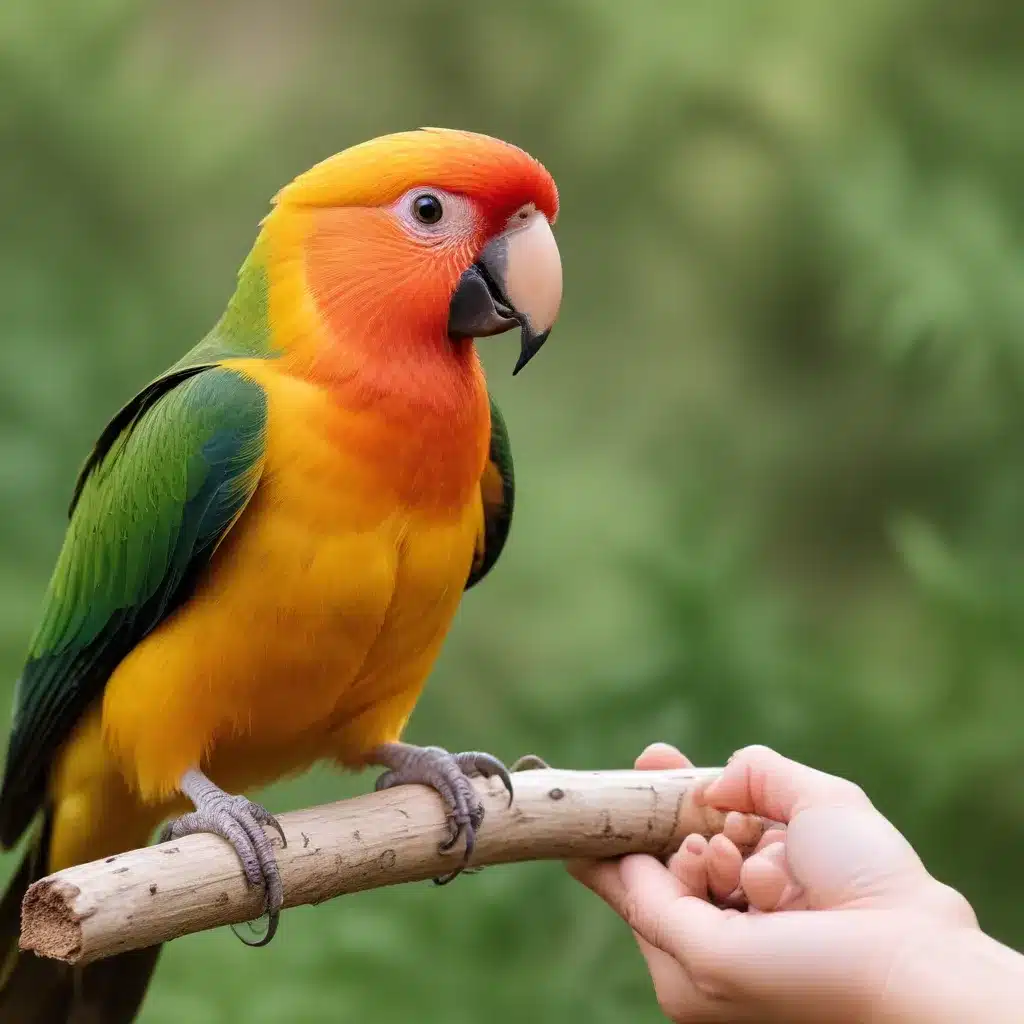
As an experienced avian caretaker and expert in the field, I’m thrilled to share with you the transformative power of positive reinforcement when it comes to training our feathered companions. Whether you’re working with parrots, songbirds, or any other avian species, this approach can unlock their incredible potential and deepen the bond you share.
Positive Reinforcement Techniques
At the heart of effective bird training lies the concept of positive reinforcement. This method involves rewarding desired behaviors, rather than punishing undesirable ones. By creating a positive association between a specific action and a valued outcome, we can shape and encourage the behaviors we want to see in our birds.
Identifying Positive Reinforcers
The key to successful positive reinforcement is identifying what motivates your individual bird. This could be a favorite treat, a cherished toy, or even positive verbal praise and attention. Experiment with different rewards to find what elicits the most enthusiastic response from your feathered friend.
Implementing Reward-Based Training
Once you’ve determined your bird’s preferred reinforcers, it’s time to put positive reinforcement into practice. The process begins by introducing a neutral stimulus, such as a distinct sound (like a clicker), and pairing it with the reward. Over time, your bird will learn to associate the neutral stimulus with the positive outcome, creating a strong behavioral response.
Monitoring Bird Progress
Pay close attention to your bird’s reactions during the training sessions. Look for signs of engagement, curiosity, and eagerness to participate. Adjust the pace and complexity of the training as needed, always ensuring your bird has a reasonable chance to earn those tasty treats. Celebrate even the smallest victories, as they lay the foundation for more advanced behaviors.
Establishing a Positive Training Environment
Creating an environment conducive to effective training is just as important as the techniques themselves. By setting the stage for success, you’ll see your bird thrive and eagerly participate in the learning process.
Creating a Calm and Comfortable Setting
Choose a quiet, distraction-free space for your training sessions. Ensure your bird feels secure and at ease, free from external stressors that could hinder their ability to focus and learn. Gradually introduce new elements, always monitoring your bird’s reactions and adjusting accordingly.
Developing a Trusting Relationship
The foundation of any successful training program is a strong bond of trust between you and your bird. Spend time simply engaging in positive interactions, such as offering treats, playing with toys, and providing gentle affection. As your bird becomes more comfortable, they’ll be more receptive to the training process.
Incorporating Bird’s Natural Behaviors
Tap into your bird’s innate instincts and behaviors when designing training exercises. By building upon their natural inclinations, you’ll create a more engaging and rewarding experience for both of you. Observe your bird closely and look for opportunities to shape and refine the behaviors that come most naturally to them.
The Science of Avian Cognition
To truly harness the power of positive reinforcement, it’s essential to understand the underlying principles of avian cognition and behavior modification.
Understanding Avian Intelligence
Birds possess remarkable intelligence, with the ability to perceive, learn, and adapt in sophisticated ways. From their keen senses and problem-solving skills to their capacity for communication and social bonding, avian species demonstrate a level of cognitive complexity that often surprises even the most experienced caretakers.
Behavioral Modification Strategies
The process of shaping desired behaviors and extinguishing undesirable ones is rooted in the principles of operant conditioning. By reinforcing the behaviors we want to see, we can gradually guide our birds towards mastering new skills and adopting more positive habits. Patience, consistency, and a deep understanding of your bird’s individual needs are key to achieving lasting results.
Effective Bird Training Approaches
With a solid foundation in positive reinforcement and avian cognition, let’s explore some of the practical applications of this powerful training methodology.
Training for Cooperative Care
Positive reinforcement is invaluable when it comes to training birds for various husbandry behaviors and veterinary procedures. By rewarding your bird for cooperating during activities like stepping onto a scale, receiving medication, or undergoing examinations, you can transform these potentially stressful experiences into positive ones.
Training for Enrichment and Engagement
Beyond the practical aspects of care, positive reinforcement training can also be used to teach your bird a wide range of entertaining behaviors and tricks. Not only does this enhance your bird’s mental stimulation and physical activity, but it also strengthens the bond you share and provides endless opportunities for bonding and enjoyment.
Considerations for Different Avian Species
While the principles of positive reinforcement are universal, the specific techniques and considerations may vary depending on the unique traits and needs of different avian species.
Adapting Techniques for Parrots
Parrots, with their remarkable intelligence and strong-willed personalities, often thrive in a positive reinforcement training environment. By understanding their species-specific characteristics, such as their natural curiosity and social nature, you can tailor your approach to unlock their full potential.
Applying Methods to Other Bird Species
The versatility of positive reinforcement training extends far beyond parrots. Whether you’re working with songbirds, raptors, or any other avian species, this approach can be adapted to suit their individual needs and behavioral patterns. By observing your bird’s unique traits and preferences, you can create a training program that resonates with their innate strengths and inclinations.
As you embark on this journey of positive reinforcement training, remember that each bird is a unique individual, and the path to success may look slightly different for each of them. With patience, consistency, and a deep understanding of your feathered companion, you’ll witness the incredible transformations that can occur when we harness the power of positive reinforcement. Unleash your bird’s potential and deepen your bond by embracing this revolutionary training approach.
For more expert avian advice and resources, be sure to visit Mika Birds Farm – your one-stop destination for everything related to the care and well-being of our feathered friends.


